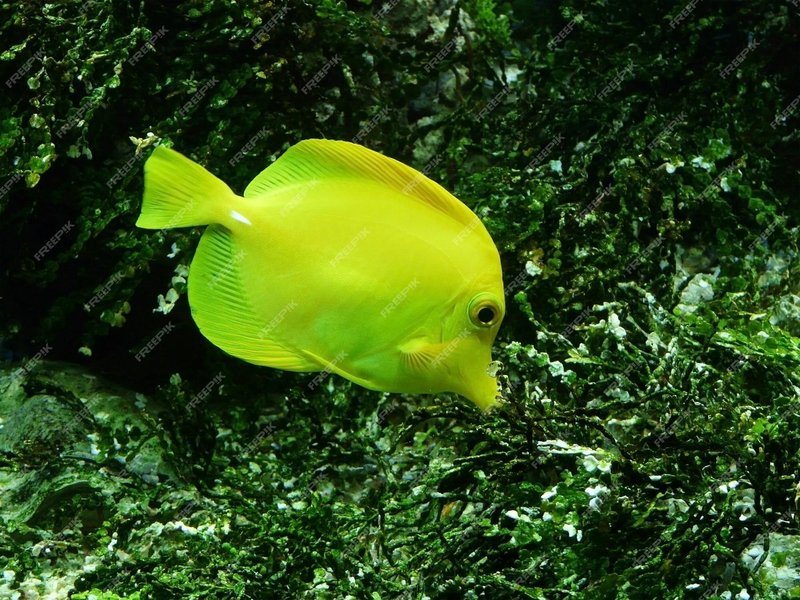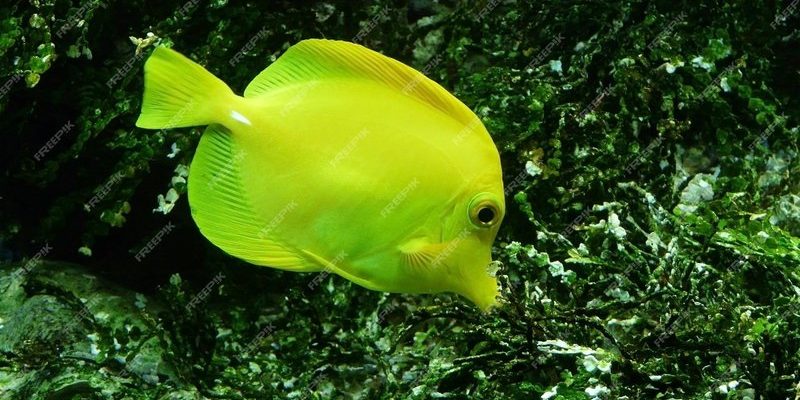
But what exactly are these myths and cultural beliefs surrounding the yellow tang? To explore this, we’ll uncover the significance of this species in different cultures, how it’s perceived beyond its physical beauty, and even some common misconceptions. Grab a cup of coffee, and let’s dive deep into this fascinating underwater world.
1. The Beauty and Inspiration of the Yellow Tang
The yellow tang is a member of the surgeonfish family, native to the warm waters of the Pacific Ocean. Its bright yellow coloration is not just for show—it serves as an adaptation for survival in the coral reefs, where vibrant colors help these fish blend into the beautiful chaos of their surroundings. In many cultures, the beauty of the yellow tang has inspired artists, storytellers, and even dreamers.
But here’s the thing: the yellow tang isn’t just loved for its looks. In Hawaiian culture, for instance, this fish is often seen as a symbol of prosperity and happiness. The locals believe that bringing this fish into an aquarium can enhance the positive energy of a home. It’s like having a little piece of sunshine swimming around your living room, reminding you of happier times and the tranquility of the ocean.
2. Myths Surrounding the Yellow Tang
You might be wondering about some of the fascinating myths associated with the yellow tang. One common story is that the yellow tang brings good luck to those who keep it in their aquariums. This belief is deeply ingrained in various cultures, especially in Hawaiian society. It’s said that these fish can ward off bad spirits and invite blessings into a household. The bright color is thought to represent good fortune, much like how a four-leaf clover might be viewed in other cultures.
Yet, it’s worth noting that while many cherish this myth, not everyone believes in its power. Some folks simply admire the yellow tang for its beauty and the joy it brings to their homes without any superstition attached. That’s the beauty of myth—we can appreciate the stories without necessarily believing every word.
3. Cultural Symbolism in Hawaiian Tradition
Hawaiians have a profound relationship with the ocean, and the yellow tang holds a special place in their hearts. In Hawaiian mythology, the ocean is filled with deities and spirits who are believed to guide and protect the islands. The yellow tang is often seen as a messenger. It’s said that spotting one can mean the presence of good fortune or a reminder from the ocean to show gratitude for its resources.
In conservation efforts, the yellow tang has also been a symbol of awareness. Many locals advocate for sustainable fishing practices, teaching others the importance of protecting marine life. The yellow tang becomes more than just a fish; it becomes part of a legacy that encourages respect for nature and the spiritual connection between people and the ocean.
4. The Role of the Yellow Tang in Marine Ecosystems
Beyond myths and cultural beliefs, the yellow tang plays a vital role in its natural habitat. These fish are essential for keeping coral reefs healthy. They feed on algae, which helps maintain the balance of the ecosystem. Imagine them as tiny gardeners of the ocean, diligently keeping algae at bay so that corals can thrive.
Unfortunately, with increasing pollution and overfishing, the yellow tang’s role is at risk. This situation creates a ripple effect, impacting not only the tangs but the entire marine environment. Protecting these vibrant fish is crucial, not just for their sake, but for the health of our oceans. So, each time you spot a yellow tang, remember—it’s not just a pretty face; it’s an essential part of the underwater community.
5. Misconceptions About the Yellow Tang
While the yellow tang is often celebrated, some misconceptions surround its care and behavior. For instance, many people believe that yellow tangs are easy to keep in aquariums. Here’s the thing: while they are resilient, they require specific care, including a spacious tank with plenty of hiding spots and clean water. If you’re considering adding one to your aquarium, it’s important to do your homework first.
Another common myth is that all yellow tangs will get along with each other. This isn’t always true, as they can be quite territorial. If you’re planning a community tank, make sure to research compatible species. Just like people, not all fish share the same space peacefully.
6. The Yellow Tang in Art and Literature
The yellow tang has made its way into various forms of art and literature. Many artists draw inspiration from this fish’s bright color and unique shape, creating artwork that captures the essence of the ocean. For instance, in tropical-themed paintings, you might see the yellow tang swimming alongside vibrant corals and other marine life, often symbolizing joy and playful energy.
In literature, the yellow tang sometimes represents the themes of adventure and exploration. Tales of diving into the ocean and discovering schools of these colorful fish often evoke a sense of wonder and curiosity. It acts as a reminder of the beauty that exists beneath the waves, encouraging readers to appreciate the world around them.
7. The Importance of Conservation Efforts
As beloved as the yellow tang is, it’s important to recognize the threats this species faces. Habitat destruction, pollution, and overfishing are major concerns. Many organizations are working hard to preserve the yellow tang’s habitat and to promote sustainable practices. Supporting these efforts can help ensure that future generations get to enjoy the beauty of these vibrant fish.
You might be wondering how you can help. Simple actions like reducing plastic use, participating in beach cleanups, and choosing sustainably sourced seafood can make a difference. Every small action contributes to the health of our oceans and supports species like the yellow tang.
The yellow tang is more than just a splash of color in the sea; it’s a symbol of various cultural beliefs, myths, and environmental importance. From its role in Hawaiian tradition to its position in marine ecosystems, this fish captures our imagination and teaches us valuable lessons about nature and conservation.
As we admire the beauty of the yellow tang, let’s remember its significance goes beyond the surface. It’s an invitation to respect our oceans, protect marine life, and explore the stories that vibrant colors and shapes can tell. So the next time you see a yellow tang, take a moment to appreciate not just its beauty but also the rich tapestry of beliefs and responsibilities that come along with it.

